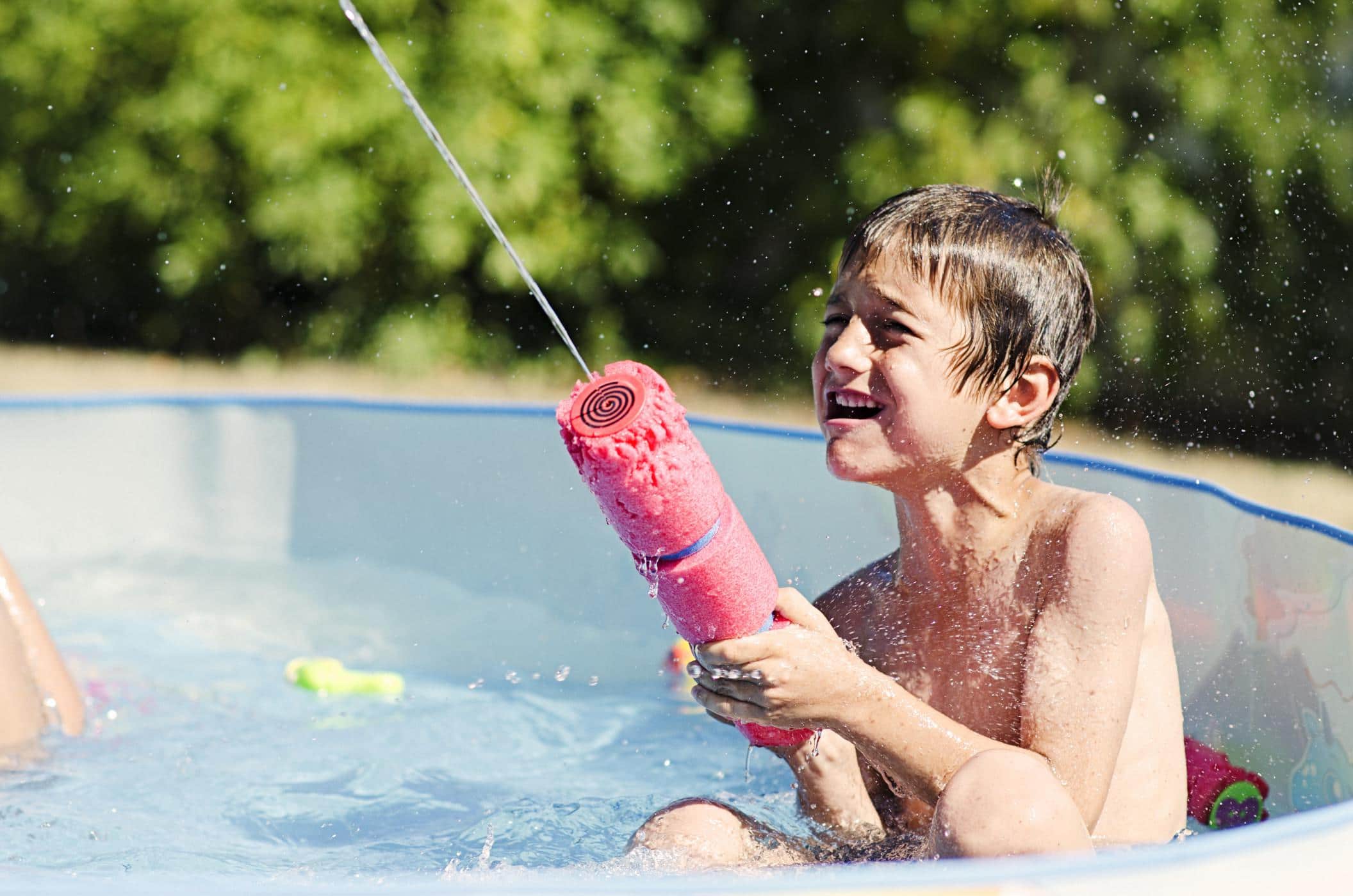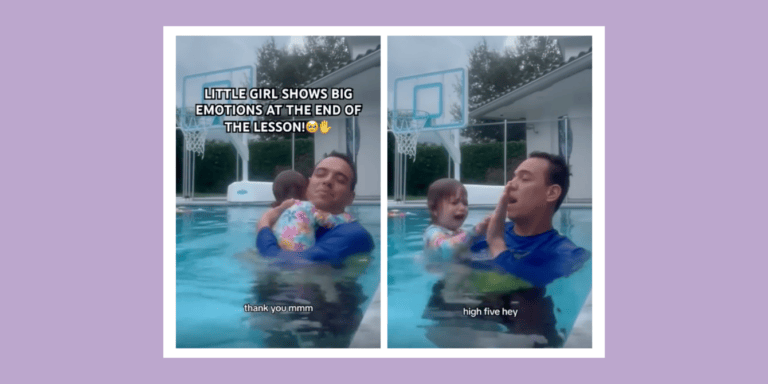What every family with a kiddie pool needs to know about water safety this summer

A pediatric emergency doctor shares important tips on how to stay safe.
Table of Contents
As the summer months get hotter and hotter, you might find yourself combing the outdoor aisles for fun water activities for your little ones to do. Inflatable kiddie pools or blow-up baby pools are a great way for the whole family to cool off and have fun—plus, they’re usually much cheaper than a pool membership, not to mention, way easier to access than a trip to the nearest lake or beach.
But to get the most sun-soaked, splashy fun out of your kiddie pool, it’s important to understand the inherent risks—and how to minimize them.
4 kiddie pool safety tips for parents
1. Recognize the dangers
Even with such a small amount of water, accidents can still happen at the kiddie pool, which means it’s important not to let your guard down.
“Bumps and bruises from falling and cuts can happen—and those things are the ones that, as an emergency doctor, I can take care of pretty easily,” Dr. Michelle Macy, a pediatric emergency doctor at Ann & Robert H. Lurie Children’s Hospital of Chicago, tells Motherly. “The more serious situations are when kids end up submerged in the water, and when that water gets in the way of their ability to breathe. When that happens and there isn’t a family member [or] an adult there to help them right themselves pretty quickly, then they can run into trouble.”
Related: 5 water safety tips to share with all your kids’ caregivers this summer
Drowning is the leading cause of injury-related death for children, with the highest casualties being teens and children under 4. Even in cases where the child survives, half will need medical care, and 5% to 10% will develop a long-term disability.
In order to prevent serious accidents, there are two points that are often stressed—teaching your kids how to swim and making sure there is a supervising adult present at all times.
2. Sign up for swimming lessons—for you and your kids
Even before age 1, children can start taking swimming lessons at local recreation centers such as the YMCA. Swimming lessons, along with water survival skills like floating on their backs, can help to reduce the risk of drowning in that vulnerable age group of 1- to 4-year-olds.
Additionally, if you don’t know how to swim, it’s important to learn for any trips beyond the kiddie pool so that you can stay close to your children.
It’s also recommended that parents and caretakers learn how to perform CPR correctly. If you find a child who is having trouble breathing or has stopped breathing due to water submersion or immersion, take them out of water immediately, call 911, and follow the instructions of the operator on the phone.
3. Stay watchful around kids in the pool
“Learning to swim and gaining some water skills is just one piece of the puzzle,” says Dr. Macy. “There isn’t really an age where we would want [your] child to be in that water without really close supervision. And for kids who aren’t yet old enough to sit unsupported, it’s really hands-on, just like if you were in a bathtub.”
She adds, “Once kids get to be toddlers and are starting to walk around, that really ups the ante in terms of how much that supervision level of intensity needs to increase. I think that as a parent, you start to think like, ‘Oh, they’re OK. They’ve got this.’ But that’s when we can run into trouble where kids get into the water, lose their balance and aren’t able to right themselves.”
Often, drowning is something that happens quietly. Assigning a “water watcher”—someone who is not under the influence of any drugs or alcohol and is not in any way distracted—ensures that an adult can intervene if any accidents happen. Dr. Macy also recommends that if you are going to go swimming with your children outside of the home, use facilities with lifeguards as “an added layer of protection.”
“We know from work that we’re doing in Chicago and around Lake Michigan that the times when folks are using the water when it’s not lifeguarded are times that we see more events like deaths and drownings,” she shares.
Since around 70% of drownings happen when it’s not swimming time, it’s important that kiddie pools be fully drained and stored correctly so that rainwater cannot collect in them. That way, if a kid does wander off, they won’t end up in the water when you’re not there.
Related: Are puddle jumpers safe in the pool? What parents need to know
4. Keep the water clean
In addition to drowning risks, kiddie pools are an easy way to collect dirt and bacteria since there is no disinfectant or chlorine added to the water of small pools. In order to keep your kiddie pool clean and decrease the risk of infection, the CDC recommends you clean your pool daily by removing debris, rinsing off any dirt and letting the pool air dry.
If any child vomits or defecates in the water, have the children exit the pool while you remove any waste while wearing disposable gloves. You’ll then have to drain the water completely and disinfect all surfaces of the pool before using it again.
The takeaway
It’s crucial to recognize that even though kiddie pools can be a source of unabashed, splashy fun, even a couple of inches of water can be dangerous for kids who have trouble sitting up or righting themselves in the water. Staying mindful and vigilant can ensure your summer outdoor time is both fun—and safe.
A version of this story was published July 18, 2021. It has been updated.
Featured Expert
Dr. Michelle Macy is a pediatric emergency doctor at Ann & Robert H. Lurie Children’s Hospital of Chicago.


































